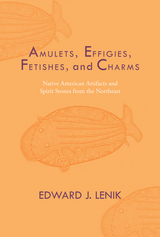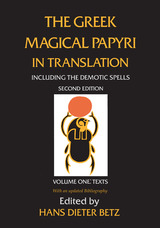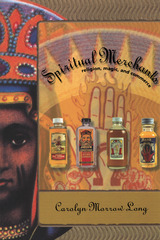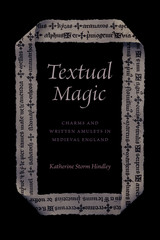4 books about Charms

Amulets, Effigies, Fetishes, and Charms
Native American Artifacts and Spirit Stones from the Northeast
Edward J. Lenik
University of Alabama Press, 2016
Rounds out Edward J. Lenik’s comprehensive and expert study of the rock art of northeastern Native Americans
Decorated stone artifacts are a significant part of archaeological studies of Native Americans in the Northeast. The artifacts illuminated in Amulets, Effigies, Fetishes, and Charms: Native American Artifacts and Spirit Stones from the Northeast include pecked, sculpted, or incised figures, images, or symbols. These are rendered on pebbles, plaques, pendants, axes, pestles, and atlatl weights, and are of varying sizes, shapes, and designs. Lenik draws from Indian myths and legends and incorporates data from ethnohistoric and archaeological sources together with local environmental settings in an attempt to interpret the iconography of these fascinating relics. For the Algonquian and Iroquois peoples, they reflect identity, status, and social relationships with other Indians as well as beings in the spirit world.
Lenik begins with background on the Indian cultures of the Northeast and includes a discussion of the dating system developed by anthropologists to describe prehistory. The heart of the content comprises more than eighty examples of portable rock art, grouped by recurring design motifs. This organization allows for in-depth analysis of each motif. The motifs examined range from people, animals, fish, and insects to geometric and abstract designs. Information for each object is presented in succinct prose, with a description, illustration, possible interpretation, the story of its discovery, and the location where it is now housed. Lenik also offers insight into the culture and lifestyle of the Native American groups represented. An appendix listing places to see and learn more about the artifacts and a glossary are included.
The material in this book, used in conjunction with Lenik’s previous research, offers a reference for virtually every known example of northeastern rock art. Archaeologists, students, and connoisseurs of Indian artistic expression will find this an invaluable work.
Decorated stone artifacts are a significant part of archaeological studies of Native Americans in the Northeast. The artifacts illuminated in Amulets, Effigies, Fetishes, and Charms: Native American Artifacts and Spirit Stones from the Northeast include pecked, sculpted, or incised figures, images, or symbols. These are rendered on pebbles, plaques, pendants, axes, pestles, and atlatl weights, and are of varying sizes, shapes, and designs. Lenik draws from Indian myths and legends and incorporates data from ethnohistoric and archaeological sources together with local environmental settings in an attempt to interpret the iconography of these fascinating relics. For the Algonquian and Iroquois peoples, they reflect identity, status, and social relationships with other Indians as well as beings in the spirit world.
Lenik begins with background on the Indian cultures of the Northeast and includes a discussion of the dating system developed by anthropologists to describe prehistory. The heart of the content comprises more than eighty examples of portable rock art, grouped by recurring design motifs. This organization allows for in-depth analysis of each motif. The motifs examined range from people, animals, fish, and insects to geometric and abstract designs. Information for each object is presented in succinct prose, with a description, illustration, possible interpretation, the story of its discovery, and the location where it is now housed. Lenik also offers insight into the culture and lifestyle of the Native American groups represented. An appendix listing places to see and learn more about the artifacts and a glossary are included.
The material in this book, used in conjunction with Lenik’s previous research, offers a reference for virtually every known example of northeastern rock art. Archaeologists, students, and connoisseurs of Indian artistic expression will find this an invaluable work.
[more]

The Greek Magical Papyri in Translation, Including the Demotic Spells, Volume 1
Edited by Hans Dieter Betz
University of Chicago Press, 1992
"The Greek magical papyri" is a collection of magical spells and formulas, hymns, and rituals from Greco-Roman Egypt, dating from the second century B.C. to the fifth century A.D. Containing a fresh translation of the Greek papyri, as well as Coptic and Demotic texts, this new translation has been brought up to date and is now the most comprehensive collection of this literature, and the first ever in English.
The Greek Magical Papyri in Transition is an invaluable resource for scholars in a wide variety of fields, from the history of religions to the classical languages and literatures, and it will fascinate those with a general interest in the occult and the history of magic.
"One of the major achievements of classical and related scholarship over the last decade."—Ioan P. Culianu, Journal for the Study of Judaism
"The enormous value of this new volume lies in the fact that these texts will now be available to a much wider audience of readers, including historians or religion, anthropologists, and psychologists."—John G. Gager, Journal of Religion
"[This book] shows care, skill and zest. . . . Any worker in the field will welcome this sterling performance."—Peter Parsons, Times Literary Supplement
The Greek Magical Papyri in Transition is an invaluable resource for scholars in a wide variety of fields, from the history of religions to the classical languages and literatures, and it will fascinate those with a general interest in the occult and the history of magic.
"One of the major achievements of classical and related scholarship over the last decade."—Ioan P. Culianu, Journal for the Study of Judaism
"The enormous value of this new volume lies in the fact that these texts will now be available to a much wider audience of readers, including historians or religion, anthropologists, and psychologists."—John G. Gager, Journal of Religion
"[This book] shows care, skill and zest. . . . Any worker in the field will welcome this sterling performance."—Peter Parsons, Times Literary Supplement
[more]

Spiritual Merchants
Religion Magic & Commerce
Carolyn Morrow Long
University of Tennessee Press, 2001
They can be found along the side streets of many American cities: herb or candle shops catering to practitioners of Voodoo, hoodoo, Santería, and similar beliefs. Here one can purchase ritual items and raw materials for the fabrication of traditional charms, plus a variety of soaps, powders, and aromatic goods known in the trade as “spiritual products.” For those seeking health or success, love or protection, these potions offer the power of the saints and the authority of the African gods.
In Spiritual Merchants, Carolyn Morrow Long provides an inside look at the followers of African-based belief systems and the retailers and manufacturers who supply them. Traveling from New Orleans to New York, from Charleston to Los Angeles, she takes readers on a tour of these shops, examines the origins of the products, and profiles the merchants who sell them.
Long describes the principles by which charms are thought to operate, how ingredients are chosen, and the uses to which they are put. She then explores the commodification of traditional charms and the evolution of the spiritual products industry—from small-scale mail order "doctors" and hoodoo drugstores to major manufacturers who market their products worldwide. She also offers an eye-opening look at how merchants who are not members of the culture entered the business through the manufacture of other goods such as toiletries, incense, and pharmaceuticals. Her narrative includes previously unpublished information on legendary Voodoo queens and hoodoo workers, as well as a case study of John the Conqueror root and its metamorphosis from spirit-embodying charm to commercial spiritual product.
No other book deals in such detail with both the history and current practices of African-based belief systems in the United States and the evolution of the spiritual products industry. For students of folklore or anyone intrigued by the world of charms and candle shops, Spiritual Merchants examines the confluence of African and European religion in the Americas and provides a colorful introduction to a vibrant aspect of contemporary culture.
The Author: Carolyn Morrow Long is a preservation specialist and conservator at the the Smithsonian Institution’s National Museum of American History.
In Spiritual Merchants, Carolyn Morrow Long provides an inside look at the followers of African-based belief systems and the retailers and manufacturers who supply them. Traveling from New Orleans to New York, from Charleston to Los Angeles, she takes readers on a tour of these shops, examines the origins of the products, and profiles the merchants who sell them.
Long describes the principles by which charms are thought to operate, how ingredients are chosen, and the uses to which they are put. She then explores the commodification of traditional charms and the evolution of the spiritual products industry—from small-scale mail order "doctors" and hoodoo drugstores to major manufacturers who market their products worldwide. She also offers an eye-opening look at how merchants who are not members of the culture entered the business through the manufacture of other goods such as toiletries, incense, and pharmaceuticals. Her narrative includes previously unpublished information on legendary Voodoo queens and hoodoo workers, as well as a case study of John the Conqueror root and its metamorphosis from spirit-embodying charm to commercial spiritual product.
No other book deals in such detail with both the history and current practices of African-based belief systems in the United States and the evolution of the spiritual products industry. For students of folklore or anyone intrigued by the world of charms and candle shops, Spiritual Merchants examines the confluence of African and European religion in the Americas and provides a colorful introduction to a vibrant aspect of contemporary culture.
The Author: Carolyn Morrow Long is a preservation specialist and conservator at the the Smithsonian Institution’s National Museum of American History.
[more]

Textual Magic
Charms and Written Amulets in Medieval England
Katherine Storm Hindley
University of Chicago Press, 2023
An expansive consideration of charms as a deeply integrated aspect of the English Middle Ages.
Katherine Storm Hindley explores words at their most powerful: words that people expected would physically change the world. Medieval Europeans often resorted to the use of spoken or written charms to ensure health or fend off danger. Hindley draws on an unprecedented archive of more than a thousand such charms from medieval England—more than twice the number gathered, transcribed, and edited in previous studies and including many texts still unknown to specialists on this topic. Focusing on charms from 1100 to 1350 CE as well as previously unstudied texts in Latin, French, and English, Hindley addresses important questions of how people thought about language, belief, and power. She describes seven hundred years of dynamic, shifting cultural landscapes, where multiple languages, alphabets, and modes of transmission gained and lost their protective and healing power. Where previous scholarship has bemoaned a lack of continuity in the English charms, Hindley finds surprising links between languages and eras, all without losing sight of the extraordinary variety of the medieval charm tradition: a continuous, deeply rooted part of the English Middle Ages.
Katherine Storm Hindley explores words at their most powerful: words that people expected would physically change the world. Medieval Europeans often resorted to the use of spoken or written charms to ensure health or fend off danger. Hindley draws on an unprecedented archive of more than a thousand such charms from medieval England—more than twice the number gathered, transcribed, and edited in previous studies and including many texts still unknown to specialists on this topic. Focusing on charms from 1100 to 1350 CE as well as previously unstudied texts in Latin, French, and English, Hindley addresses important questions of how people thought about language, belief, and power. She describes seven hundred years of dynamic, shifting cultural landscapes, where multiple languages, alphabets, and modes of transmission gained and lost their protective and healing power. Where previous scholarship has bemoaned a lack of continuity in the English charms, Hindley finds surprising links between languages and eras, all without losing sight of the extraordinary variety of the medieval charm tradition: a continuous, deeply rooted part of the English Middle Ages.
[more]
READERS
Browse our collection.
PUBLISHERS
See BiblioVault's publisher services.
STUDENT SERVICES
Files for college accessibility offices.
UChicago Accessibility Resources
home | accessibility | search | about | contact us
BiblioVault ® 2001 - 2024
The University of Chicago Press









